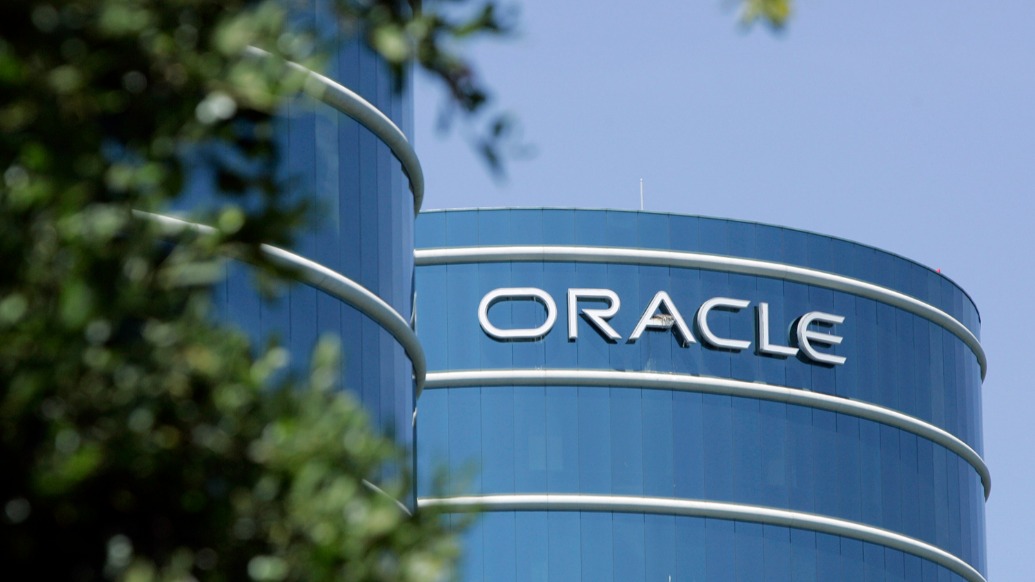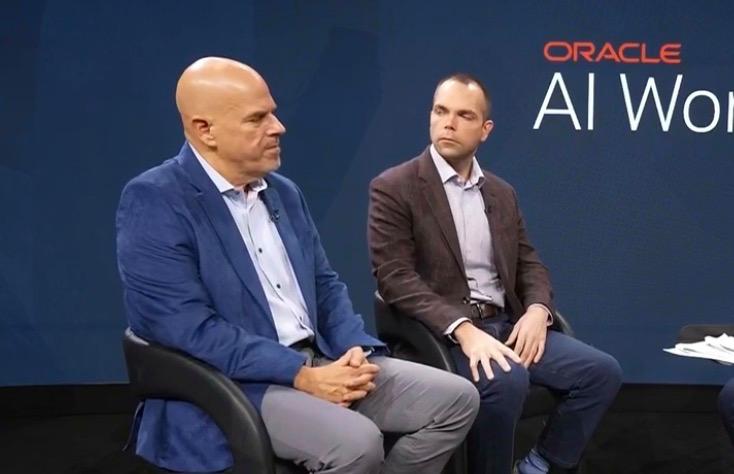
Recently, Oracle held the AI World conference in Las Vegas, and one of the company's new CEOs, Clay Magouyrk, made his first public appearance and delivered a speech. He revealed at the meeting: In the past 30 days, Oracle has signed 4 new cloud service orders in one go, with a total contract value of up to $65 billion!
One of the key customers is social media giant Meta. Boosted by this blockbuster news, Oracle's stock price rose more than 3% on the same day, and its market value approached $900 billion.
|The order is soft, but the money is still 'climbing'
Oracle's pressure to make money is clearly visible from a newly exposed internal document. According to data obtained by technology media The Information, in the quarter ending in August this year, Oracle earned about $900 million by renting out Nvidia AI chips, but the gross profit was only $125 million, and the gross profit margin was only 14% - making very hard money.
To make matters worse, the latest generation of Blackwell chips:
This quarter, Oracle lost nearly $100 million directly on renting Blackwell chips, dragging the profit margins of the entire GPU business even lower. If long-term costs such as server depreciation are included, the gross profit margin of the overall GPU business has even fallen to single digits (less than 10%).
This corresponds to what Oracle's new CEO, Clay Magurke, said, is a "climbing period" - invest a lot in the early stage, lose money first, and only make money when you run.
He gave an example in his speech: assuming that a six-year, $60 billion contract is signed, Oracle may have to spend $570 million to build a data center at the beginning, which is a loss in the early stage; but once it is completed and put into use, it can bring $10 billion in revenue per year, cost $6.4 billion, and gross profit margin can increase to 35%, and really start to make money.
But the problem is that this "climbing" process is more difficult than imagined.
Hopper chip (has been on the market for two years): contributed nearly half of GPU revenue, but the gross profit margin was only 26%, which is still far from the ideal level; H200 chip (one year of launch): gross profit margin of 19%, accounting for nearly 20% of revenue; Older Nvidia chips (released five years ago): now renting them out is even losing money.
To put it simply, although Oracle has received a large order, the current business of selling AI computing power is too costly and the profit is too thin, and it is still in the stage of "burning money for the future", and it is still far from making a real profit.

If you want to counterattack, it is not easy
Whether Oracle can deliver on its promise of "high profits in the future" depends on whether it can win better prices from Nvidia.
But the reality is cruel: according to internal documents, even if it is an Nvidia chip that has been on the market for one to two years, it is difficult for Oracle to achieve a gross profit margin of more than 25%.
This is because Nvidia is too strong - it almost monopolizes the AI chip market and has absolute pricing power. Bloomberg analyst Anurag Rana pointed out that Nvidia's profit margins have soared by 40 percentage points in recent years, making a lot of money.
Cloud companies like Oracle can only "endure" the pain to buy chips at high prices and bear the pressure of low profits. What's even more troublesome is that the price of Nvidia's next-generation chips has not yet been determined, and the cost of electricity, data center equipment, etc. is also rising, so Oracle's burden will only be heavier.
In contrast, Oracle is clearly at a disadvantage in the competition:
Microsoft and Amazon are not so dependent on NVIDIA chips, because most of their business still uses traditional CPUs (central processing units), which are highly profitable and can "flatten" the losses caused by AI chips; Amazon also develops its own AI chips to further reduce costs; However, Oracle does not develop its own chips, it can only rely on buying, and the bargaining power is weak, and the cost cannot be suppressed.
According to The Information, some executives within Microsoft are not even convinced that Oracle can achieve its stated growth goals.
But if it can be realized, Oracle's cloud server rental revenue in the early 2030s may theoretically catch up with Microsoft (second only to Amazon Cloud), which currently ranks second.
Bet on AI, making money is still 'boiling'
At present, Oracle's most profitable is the traditional high-margin software business, which still accounts for the majority of revenue and improves the company's overall profitability.
But the company's future intention is that by 2030, most of its revenue will come from AI chip leasing. This poses a problem - the AI chip business is currently thin in profit, which may reduce the company's overall profit margin.
In this regard, Oracle executives advised investors: don't just focus on the profit margin percentage, but see whether the "total profit" can increase. As long as the revenue grows rapidly, even if the profit margin is a little lower, the total money earned may be more.
It is also trying to "not rely only on Nvidia"
In order to reduce its dependence on Nvidia, Oracle recently increased its purchases of AMD chips and announced that it will further deepen its cooperation. OpenAI also said that in the future, it may use up to 6 gigawatts of AMD chips through cloud vendors such as Oracle.
But the reality is that in the quarter of August this year, Oracle was still losing money on AMD GPU leasing; AMD chips account for only 3% of its total GPU leasing revenue; These chips will only be available on a large scale from the fall of 2024 and are still in the "starting burning" stage.
The entire AI cloud market is not easy
Customers typically rent GPUs on an "hourly" basis, at a fixed price. But if Oracle's own costs rise (such as electricity bills and expensive new chips), profits will be compressed; Nvidia pushes a new generation of AI chips almost every year, and cloud vendors are under a lot of pressure - as soon as the old chips run smoothly, they have to quickly buy new chips and deploy new systems, with almost no breathing.
Finally, compare your peers
Oracle rented about 270,000 GPUs of all types in the last quarter; CoreWeave, a professional AI cloud company, has more than 250,000 GPUs, but its revenue in the latest quarter is $200 million more than Oracle's cloud business.
However, companies like CoreWeave only do GPU rental and are not supported by other high-profit businesses, so long-term profit pressure may be greater.
In Jingtai's view, Oracle is going all out to rush to the AI cloud, although it is now "making less money", but relying on diversified business and traditional software profits to "transfuse" to buy time for itself. It wants to rely on scale for the future, but the road ahead is full of challenges - chips are expensive, competition is fierce, and technology updates are fast.





